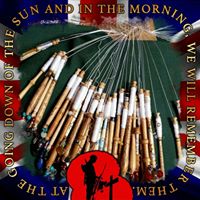By what name do the Lakota and other Plains Indians know the “Battle of the Little Bighorn”?
The 'Battle of the Little Bighorn', known to the Lakota and other Plains Indians as the 'Battle of the Greasy Grass' and also commonly referred to as Custer's Last Stand, was an armed engagement between combined forces of the Lakota, Northern Cheyenne, and Arapaho tribes and the 7th Cavalry Regiment of the United States Army. The battle, which resulted in the defeat of US forces, was the most significant action of the Great Sioux War of 1876. It took place on June 25–26, 1876, along the Little Bighorn River in the Crow Indian Reservation in southeastern Montana Territory.
The fight was an overwhelming victory for the Lakota, Northern Cheyenne, and Arapaho, who were led by several major war leaders, including Crazy Horse and Chief Gall, and had been inspired by the visions of Sitting Bull (Tȟatȟáŋka Íyotake). The US 7th Cavalry, including the Custer Battalion, a force of 700 men led by Lt. Col. George Armstrong Custer, suffered a major defeat. Five of the 7th Cavalry's 12 companies were annihilated and Custer was killed, as were two of his brothers, a nephew and a brother-in-law. The total US casualty count included 268 dead and 55 severely wounded (six died later from their wounds), including four Crow Indian scouts and two Pawnee Indian scouts.
More Info:
en.wikipedia.org









